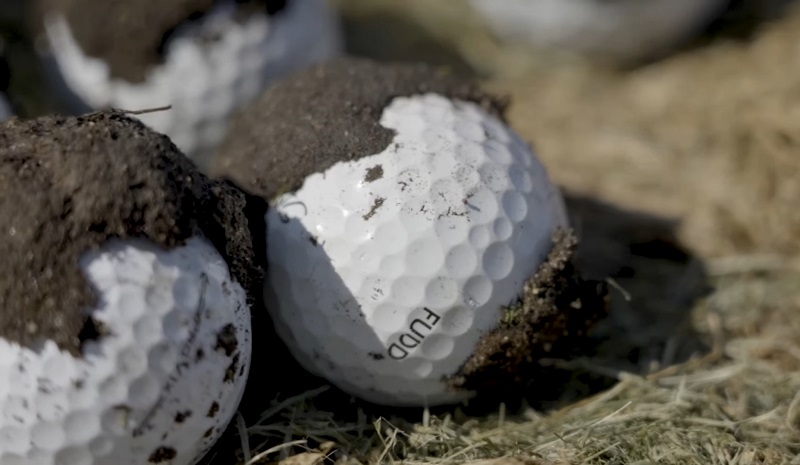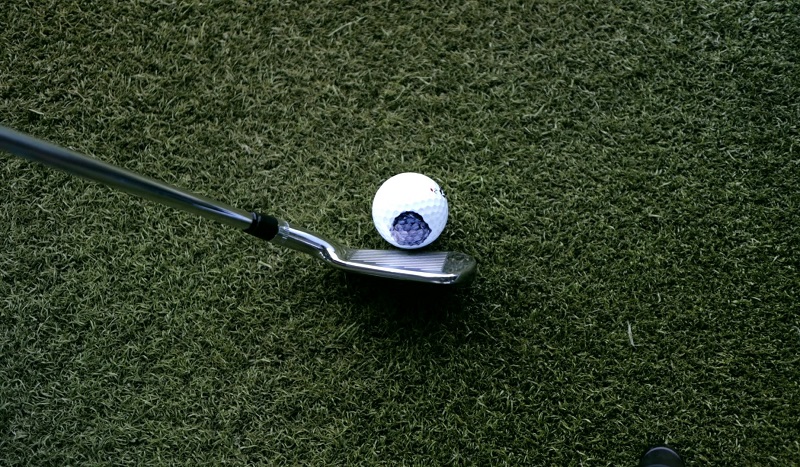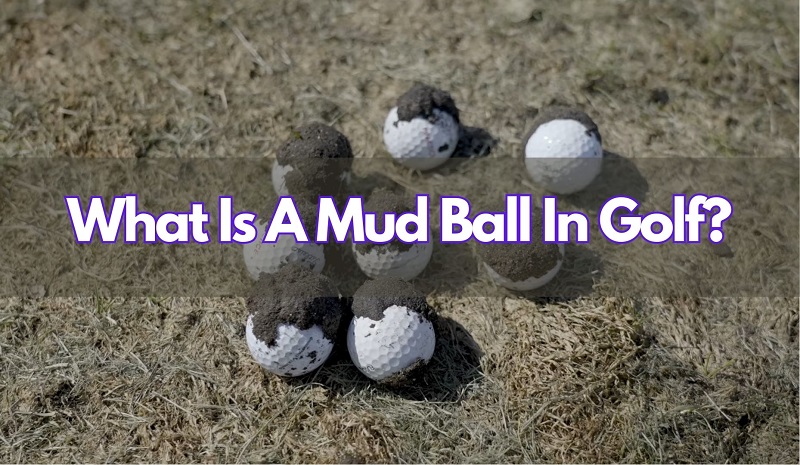Mud ball is a unique form of golf that has recently gained popularity among golfers. It is played with the same rules as traditional golf, but what sets mud balls apart are its special rules and regulations that make it much more challenging than regular golfing. Mud ball requires players to use their creativity and strategy in order to score well in each round. In this article, we will explain what a mud ball is, discuss the rules and regulations, and provide tips on how to play it effectively. With this information, readers will have a better understanding of what mud ball is all about and be able to enjoy this unique form of golfing.
What Is A Mud Ball In Golf?
A mud ball is a golf ball that has been covered with mud or dirt, which can occur frequently during the winter or rainy seasons. This can make playing with a mud ball more difficult, as golfers must carefully navigate the direction of the ball and control the force to hit the intended shot.
How Does A Mud Ball Affect Your Game?

A mud golf ball can affect your game in a few ways. First, mud golf balls tend to be heavier than regular golf balls, which can make them difficult to hit accurately.
Secondly, the grooves of a mud ball may not allow for as much spin as you’re used to on your shots. This lack of spin can lead to shots that don’t travel as far.
Finally, the dirt and mud on a mud golf ball can make it difficult to read your putts accurately, as the dirt may obscure any subtle breaks or contours of the green.
Ultimately, playing with mud golf balls can be a good way to test your accuracy and skills in different conditions, but it can also lead to a more difficult game. If you’re playing with mud golf balls, make sure you practice enough to adjust your swing and strategy accordingly.
Rules About Mud Balls In Golf
Mud balls are a common occurrence in the game of golf. Under USGA (United States Golf Association) rules, mud balls can be counted as part of your score if they are hit by you or your opponents’ clubs. If a ball becomes embedded in the ground, including mud, it may be lifted without penalty and placed at the nearest point of relief, no closer to the hole. If a mud ball is hit and not found, it is considered lost, and you must take penalty strokes for hitting an additional stroke.
The same rule applies for balls that are hit out of bounds and lost in mud or water hazards. In these cases, a player has three options:
- Drop the ball behind the point of entry
- Drop the ball at the nearest point of relief no closer to the hole
- Replay from the original position.
The USGA rules also specify that if mud adheres to a players’ club, it must be wiped off before taking another stroke. If this is not done and a stroke is made, the player will incur a penalty.
Besides, when the Winter Rules are applied, the mud ball rule also applies. That means you can remove the mud from your ball without penalty and take a drop within one club length of the nearest point of relief, no closer to the hole.
Can You Clean A Mud Ball While Playing?

Generally speaking, it is not recommended to clean a golf ball while playing. The Rules of Golf state that players must not improve their lie by cleaning or pressing down grass, soil or other natural objects. Cleaning a mud-covered golf ball could be interpreted as improving the lie and thus should be avoided during play.
When a mud-covered ball is found, it’s often best to declare the ball unplayable and take a penalty stroke, as we mentioned about the rule of mud ball; this allows you to take relief by dropping another ball in an area no closer to the hole. This can give you a better chance of getting out of trouble than trying to play the mud-covered ball.
If you do decide to clean your ball during play, be sure not to press down on the mud or grass. This can cause damage to the course and also result in a penalty stroke. If you must clean it, use a towel or piece of clothing gently wipe away any mud from the surface of the golf ball.
How To Play A Mud Ball In Golf?
When playing with mud balls in golf, special considerations come into play to achieve an accurate direction. While golfers are permitted to clean the ball before hitting it in some cases, such as when putting on the green or when using a club to tee off, mud balls should be played as they lie on the course. To successfully play a mud ball, golfers must adjust their power, carefully select the right club, and deftly control the ball in order to make a precise shot toward their intended target.
So, how to play a mud ball in golf with these tips, before we’ll discover them in detail now, we need to know some general rules about how effective the mud ball makes:
- Mud on the left makes the ball move right
- Mud on the right makes the ball move left
- Mud is on the ball’s front side; it will have less backspin but will move straight
- The mud is on the back; it will not travel as far.
After verifying the status of the mud ball, golfers should consider some tips below to play:
Start by choosing a suitable club for the target distance and environmental conditions. Because the mud can cause both distance loss and inconsistent spin, it’s best to use a club with a little extra distance potential. For instance, a player who would typically use a 9-iron to hit a ball the desired distance may need to use an 8-iron when hitting a mud ball.
It is crucial to take into account the slopes and any obstacles that may affect the ball’s trajectory. The position of the mud on the ball also significantly determines how you decide your hit. For instance, if the mud is on the right of the ball, adjust the club hit to the left side of the ball if you want it to go straight. However, if the mud is on top, in front of or on the back of the ball, it only slightly influences your hit. Adjust the force you apply to the hit accordingly, either increasing or decreasing it as necessary.
Modify the power of the hit based on the distance and the type of swing you choose. For example, if you choose to hit the ball with a full swing, you may need to apply more power to compensate for the added resistance of the mud on the ball.
Maintain a relaxed mind while hitting the ball. Avoid overthinking or tensing up during the swing. Keep your focus on the shot, and release the ball with a smooth stroke.
FAQs
How Can You Spot A Mud Ball?
Mud balls are generally darker in color than regular golf balls due to the dirt and debris that are mixed in with the mud. They may also have a rougher texture than regular golf balls.
What Is The Penalty For Playing A Mud Ball?
The penalty for playing a mud ball, or any kind of improved lie, is one stroke added to your score. Additionally, there may be additional penalties if the course has been damaged due to cleaning the mud ball.
Do Pga Tour Players Have To Deal With Mud Balls?
On occasion, PGA Tour players must play mud balls. Professional golfers are still expected to abide by the rules and regulations when playing a mud ball, just like any other golfer.
What Is Considered A Playable Mud Ball?
Generally, if the mud has not impacted the core of the golf ball, it will still be considered playable. It is best to consult the rules of the course you are playing on before making any decisions regarding playable mud balls.
Can I Clean A Mud Ball In The Fairway?
It is illegal to clean a mud ball in the fairway if you are playing a tournament. For casual rounds, it is generally accepted to lightly wipe away any excess mud on the surface of the golf ball and continue with your shot.
What Are Lake Balls Golf?
Lake balls are golf balls that have been previously used in or around water hazards, often recovered from the bottom of lakes. They are usually deemed unfit for use on the course due to their damaged condition, but they can be great practice aids.
What Is A Waterlogged Golf Ball?
A waterlogged golf ball is one that has been submerged in water for an extended period of time. It will usually feel quite heavy and may contain more air pockets than a regular golf ball. These balls are typically considered unplayable due to their poor condition.
Read more:
- Top 15 Best Golf Balls for High Handicappers – 2023 Buyer’s Guide
- Best Golf Balls For Beginners 2023 – Top 10+ Picks & Review
Final Thoughts
Mud balls can be a unique and interesting challenge for golfers, but it’s important to stay within the rules and regulations of your course when playing one. Understanding what mud ball is all about, its rules and regulations, as well as some effective tips on how to play it correctly, is key to mastering this form of golfing. Keep these pointers in mind, and start having fun with mud balls today!


